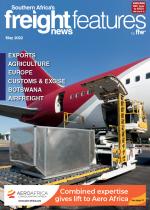South Africa needs to stop being its own non-tariff barrier if it is intent on growing exports. The country must reform economically, otherwise it will continue to struggle to get exports into the global market timeously, says Francois Fouche from Growth Diagnostics and the Centre for African Management and Markets at the Gordon Institute of Business Science (GIBS).According to the South African Revenue Service (Sars), exports tumbled by 16.1% from December 2021 to R130.1 billion in January this year, amid lower shipments of precious metals and stones, vehicle transport and equipment, mineral products, machinery and electronics.“One way to think about what is happening at the global level is to say that when elephants fight, the grass gets trampled. In this equation we, South Africa, are the grass,” explains Fouche. “When Russia decided to invade Ukraine, commodity prices went through the roof. South Africa is still predominantly a commodity-producing and exporting country. The global conditions at present are ideal to benefit from rising commodity prices, but our infrastructure management does not allow us to participate in this growth opportunity for exports.”Fouche says South A f r ica’s rail and port infrastructure is its own non-tariff barrier. “If this was world-class instead, it would translate into a much faster economic growth creating a wealthier country. Removing the hurdles to exports and growth would be a good start to set South Africa on a much-needed higher growth trajectory.“The global conditions will not last indefinitely and we need to capitalise on them now. What is playing out in the balance of payments is what we gain via higher export prices thanks to the commodity price increase. We lose by paying so much more for oil impor ts.”The country’s petrol and diesel imports have increased significantly over the past two years after several South African oil refineries closed down during the global Cov id-19 pandemic.“When it comes to exports, we should be focusing on more regulatory changes that will advance the case for easier and cheaper ways to export,” says Fouche. “If we look at what has happened to gross fixed capital formation in the country according to the latest numbers from the Reserve Bank for the third quarter of 2021, it is still at a very low 14.3% of GDP.”Considering that the targeted ratio for that figure is 30% according to the National Development Plan, plenty of hard work remains. With public sector investment continuing to shrink steadily over the past five years, and the private sector under pressure and still recovering from the pandemic, now more than ever there must be a focus on resolving the binding constraints to investment attraction and export development. This includes the modernisation of the Port of Durban and allowing for more private sector operators at the country’s ports.“Treasury is simplifying these public-private partnership models and we must start implementing these, but it is taking way too long,” says Fouche. “The cost of moving goods through the ports and via the country’s roads and rail is also becoming prohibitively expensive, and these costs must be addressed. We cannot grow via the export market if we are unable to competitively move goods around.

